Many companies start competitor analysis when they develop a digital marketing strategy and never get back to it later. This is an oversight, because in many cases a timely update on your rivals’ online moves could help you adjust your campaign mid-way and help it to perform better in the end.
In this article, we will draw your attention to the main points of competitor analysis that you may need to revisit when your digital marketing strategy has been up and running for a while. We will name the key metrics that we recommend tracking on each channel and show you how to monitor them with Semrush tools.
What Is Competitor Analysis? Who Should You Analyze as Competitors in Digital Marketing? Why You Need an Ongoing Competitor Analysis? How Often Should You Review Your Digital Marketing Strategy with the Help of Competitor Analysis? How to Do Competitor Analysis on a Regular Basis: The Key Points for Digital Marketing 1. Stay Updated on Competitors’ Market Positions 2. Check Your Rivals' Choice of Platforms for Advertising and Media Placements 3. Get Insights On Competitors’ Top Marketing Campaigns 4. Analyze Your Competitors’ SEO Efforts Review the Findings With Your Own Goals and Strategy in MindWhat Is Competitor Analysis?
Let’s start with the basics: the definition of competitor analysis. It is the process of researching and analyzing the marketing strategies and business characteristics of the companies operating in a given market.
Competitor analysis is typically carried out to identify the strengths and weaknesses of other market players, define your company’s standing in relation to them, and highlight gaps and estimate your potential to fill them.
Who Should You Analyze as Competitors in Digital Marketing?
Competitor analysis normally includes your direct and indirect competitors — those providing the same (or similar) solutions to the same (or similar) audiences.
Online competitor analysis should cover the above, plus one more group of rivals: your brand competitors that fight for the same users as you. They don’t necessarily need to sell them a similar product or service, but they definitely want to get their attention.
This is a tricky challenge, but may the most intelligent competitor win!
Why You Need an Ongoing Competitor Analysis?
Your main competitors are most likely to stay the same as when you developed the strategy, but their positions and the general situation in the market is constantly shifting.
Here are the key reasons to check up on other market players on a regular basis:
To review benchmarksFrom monitoring your internal stats, you know which channels perform best — but what if your competitors have managed to achieve even better results? You need to know this.
To catch up with industry and market trendsThere are some seasonal trends that reoccur every year — and there are peaks and declines in demand that you will be prepared for only if you monitor the competitive landscape. Make sure to stay alert.
To learn the best new practices and the mistakes to avoidSometimes it’s better to let your competitors test new channels than go there yourself and waste your budget. Learn from other companies' experience.
To update your marketing mixFrom digital marketing campaigns, you can get some important news on your competition, such as a new product launch, and get ideas for your own company’s development.
To refine your goalsAs the situation in the online market changes, you may need to adjust not just your strategy, but also the objectives you previously set.
How Often Should You Review Your Digital Marketing Strategy with the Help of Competitor Analysis?
Each industry develops at a different pace, so you may need to get updates more (or less) often. Normally, we’d recommend doing competitor analysis monthly — to keep tabs on growing trends and adjust your campaigns accordingly; and quarterly — to implement bigger changes in your digital marketing strategy.
You can check and analyze other companies’ metrics frequently, or only when you’re ready to make adjustments to your campaign.
How to Do Competitor Analysis on a Regular Basis: The Key Points for Digital Marketing
Competitive analysis may seem like a dreary and endless task to marketers. To help you stay focused, we will walk you through its key aspects, and cover the process of generating insights from core digital channels.
1. Stay Updated on Competitors’ Market Positions
If you want to stay sure that your strategy will help you beat your rivals online, you need to stay up to date on their latest digital marketing moves and your own performance compared to theirs.
For our competitor analysis example, let’s take Wayfair, a home decor e-tailer that wants to catch up with its rivals’ online performance.
For a better understanding of the market, you may want to start with checking up on the overall market landscape. In Semrush Market Explorer, you only need to enter one website in the search field, and the tool will conduct a complete competitor mapping for you.
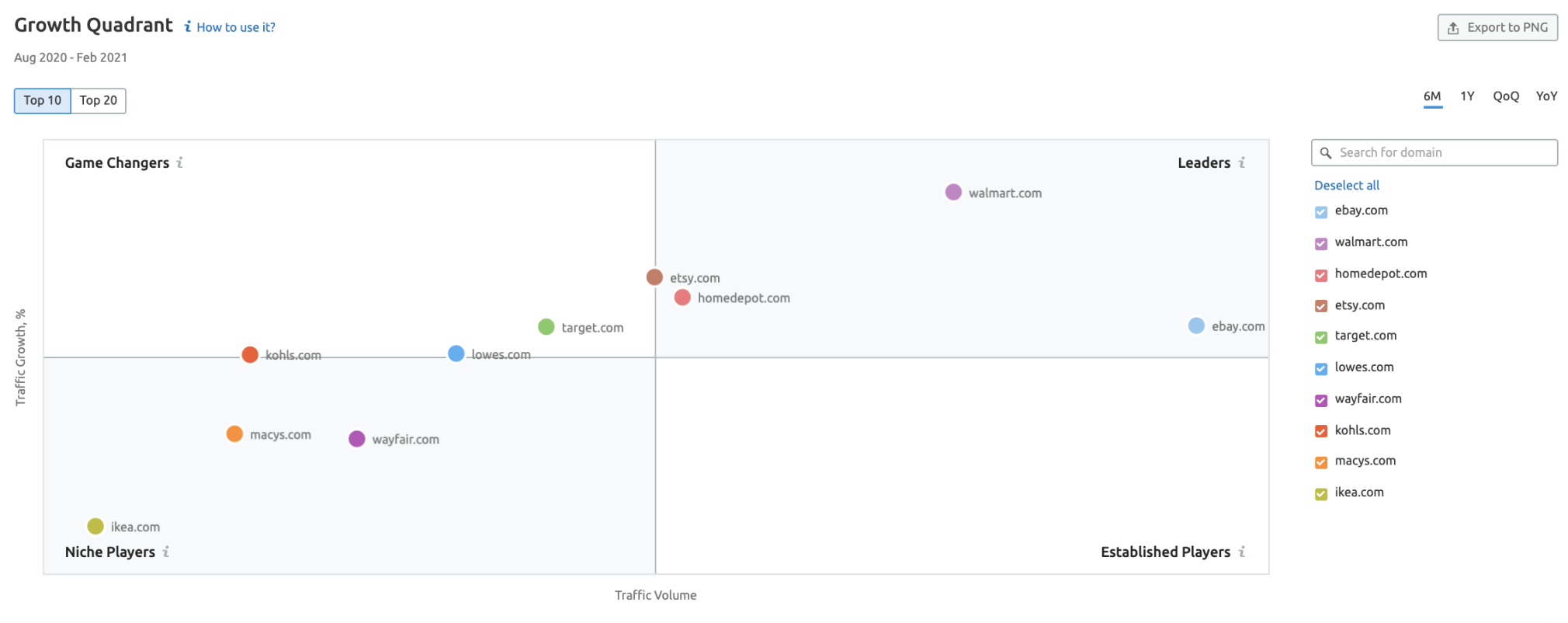
With this tool, you can:
Map out the competitive landscape in a comprehensible form of a Growth Quadrant; Qualify your competitors by their current audience size and market potential; Get a dynamic view of your closest rivals’ online market shares and changes in their market positions over time; Hand-pick your closest rivals based on traffic and market share numbers, and create a Custom market to explore the marketing strategies and keep a constant watch on the competitors that matter.Then, for a more granular analysis, turn to the Benchmarking report to get a breakdown of the market’s key patterns for audience generation:

From the most efficient traffic sources to social media platforms, this report reveals which channels you should consider adding to your marketing mix if you haven’t already.
By frequently revisiting this report, you can also quickly spot any emerging traffic sources you may not have thought of before. For instance, in our example, Reddit seems to be an underdog when it comes to traffic generation, yet some competitors are already leveraging this platform to their advantage.
Take note of any discrepancy from your initial digital campaign research — niche overview, seasonal trends, and the most sustainable player.
2. Check Your Rivals' Choice of Platforms for Advertising and Media Placements
Next, move on to Semrush Traffic Analytics to take a sneak-peek into which platforms might bring the most value from paid and organic marketing partnerships.
Start off with checking out which sites your rivals’ shared audience visits most frequently when surfing the web. Go to the Audience Insights tab and simply enter up to five competitors:
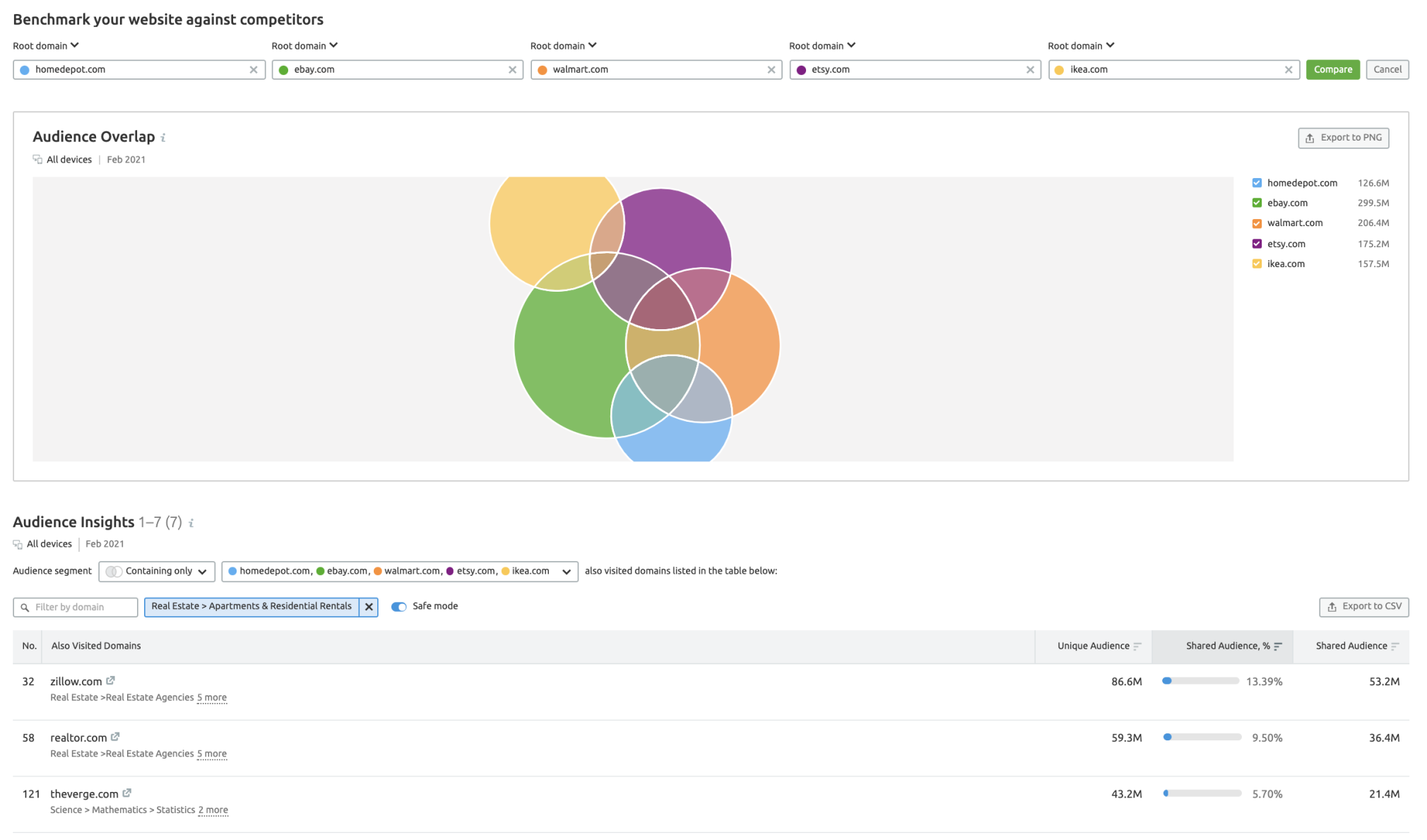
Don’t forget to use the Category filter to narrow down your exploration to platforms that fall within your audience interests and get rid of the obvious sites like Facebook and YouTube.
In our home decor case, 13% of the audience visits zillow.com. But before you make your decision on whether to partner with this real estate site for any kind of promotion, double-check if the platform is a good match in your particular case.
Enter your own and your potential partner’s website into the tool and reveal the percentage of shared audience to either expand your audience reach (if you don’t share a large portion of the same users) or to get an extra touchpoint with customers-to-be (if you have a high audience match).
To strengthen your audience acquisition strategy even further, you can also get additional placement ideas for diverting the attention of your rivals’ audiences from the Traffic Journey report:
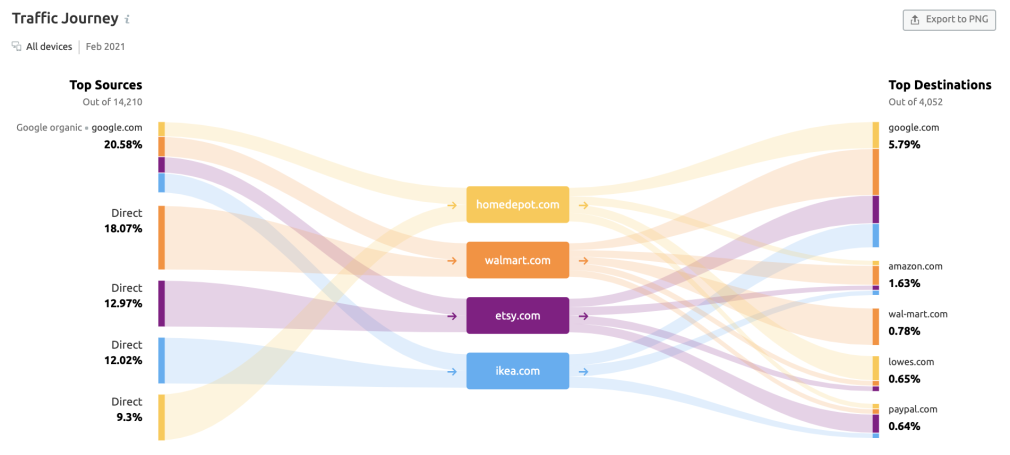
The report reveals an in-depth customer journey analysis — which sites people visit before and after landing on competing sites — that can help you reconsider your marketing mix for more efficient audience acquisition.
3. Get Insights On Competitors’ Top Marketing Campaigns
There’s another factor that never remains constant within competitor analysis — your rivals’ top offers/products and marketing campaigns.
The Traffic Analytics tool’s Top Pages report shows the most visited pages of the competitors’ site — out of this overview, you can pinpoint your rivals’ most popular offers and campaigns.
Let’s take HomeDepot as the key competitor here:
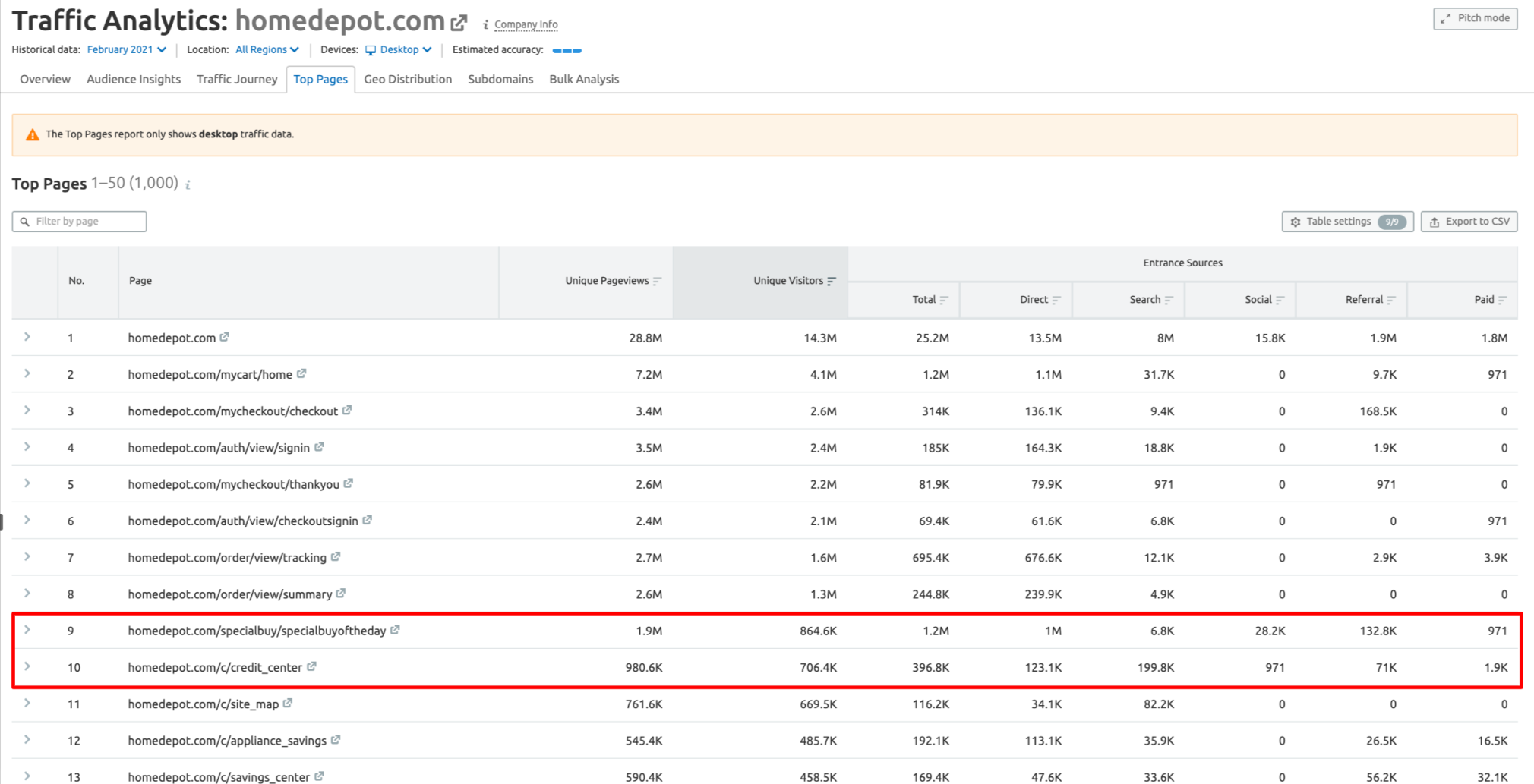
In terms of top offers, their credit card solution seems to attract over 20% of the brand’s audience:
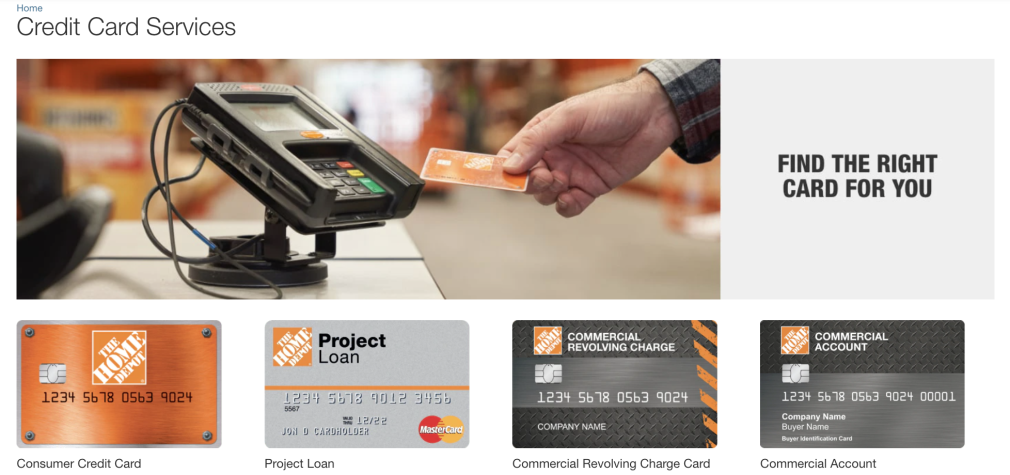
A comparable number of visitors seem to be interested in HomeDepot’s Special Buy of the Day campaign, a dedicated page where the company features special deals for selected home decor products.
If all the previous steps can wait for a quarterly review, this part should be revisited on a monthly basis, as offers change and you should only focus and launch a counter-campaign against the ones that are getting some impressive traction among your target audiences.
4. Analyze Your Competitors’ SEO Efforts
If other companies are outranking you in organic search, they must also be getting more clicks, generating more leads, and gaining more revenue. There can be 200+ reasons why it happens, but, usually, it’s not all that complicated.
With the Organic Research tool, you can monitor a target website’s organic search visibility. We will continue our example analysis and see what’s up with homedepot.com in organic search:

At a glance, you can discover:
The target website’s total number of keywords with organic positions (in Google Top 100), presented visually; Expected monthly organic traffic from those keywords; Estimated price of the given organic keywords in Google text Ads; Estimated branded and non-branded traffic.You can get into more detail on your rivals’ keywords that let them take top positions in organic search:
Discover their most successful keywords; Get an idea of consumer behavior, based on search volume; See the most popular pages that users found with organic search; Outline initial ideas on how you can optimize your campaign to increase your rankings and conversions.
You can also get content marketing strategy ideas with insights from Keyword Gap.
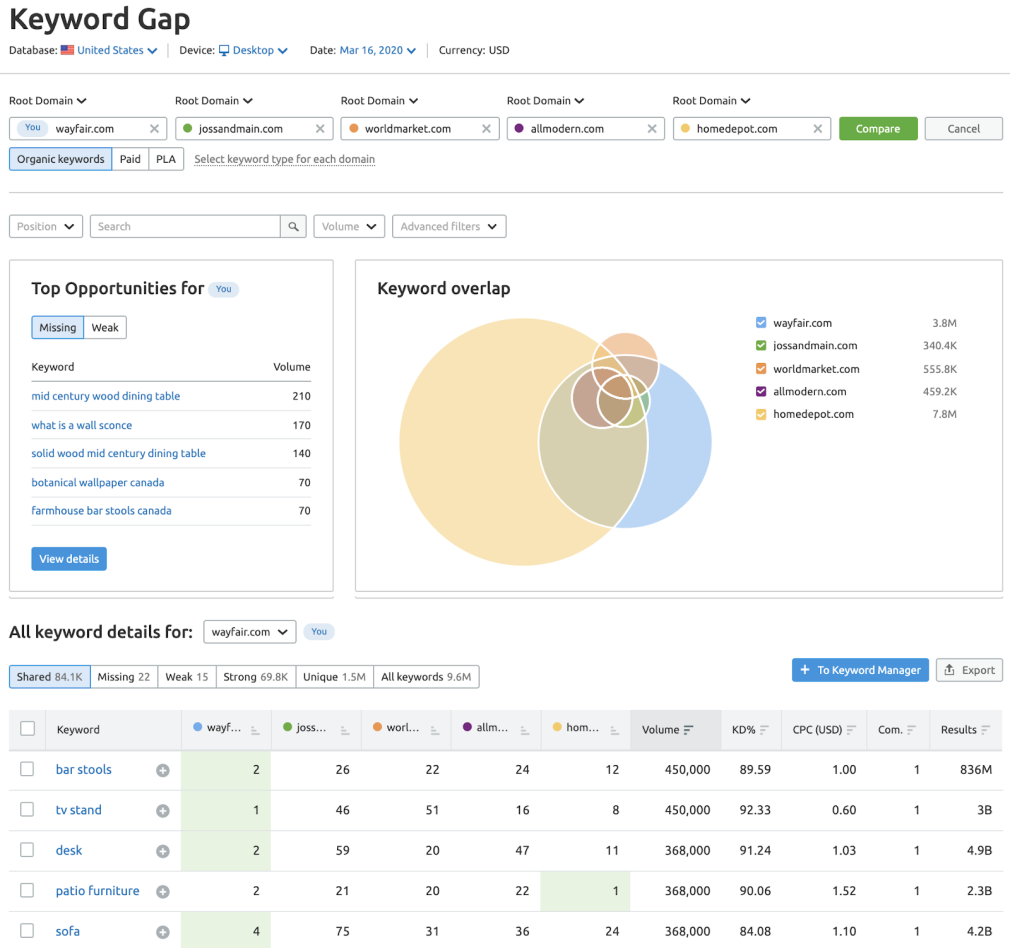
The tool allows you to perform a side-by-side competitor comparison in terms of keyword portfolios (be it organic, paid, or PLA) of up to five domains at once. Any newly discovered missing or untapped keyword can help you discover new ideas for future content creation (or for adjusting existing pieces) and, thus, open up more possibilities for outranking your rivals for selected search queries.
Review the Findings With Your Own Goals and Strategy in Mind
Now that you’ve walked through the key steps of a recurring competitor analysis, you need to make sense of your findings.
Assess how competing businesses’ actions and your marketing ideas correlate with your initial strategy.You may discover that a long-term campaign you started six months ago doesn’t correspond to the current market trends and needs. Well, it’s definitely better to find out now than in another six months.
Filter out any ideas that are not in line with your company’s offering, positioning, ultimate goals, or strategy.No matter what brilliant insights you have found by looking at your competition, if they don’t align with your brand idea or roadmap, it’s better to push them to the back burner. And this is when the next point becomes crucial.
Communicate competitive intelligence to other departments.Competitor analysis can reveal insights that are not yet actionable for the marketing team but will be appreciated in the sales department, for example. Needless to say, any intelligence is invaluable for executives.
Think of those colleagues who could benefit from your findings and don’t hesitate to share your competitor analysis report with them.
Encourage and initiate changes in your marketing plans and strategy (if needed)If you’re halfway through your marketing campaign and, compared to rivals, it isn’t producing great results, don’t be afraid of making tweaks or even rethinking the entire strategy. At the end of the day, this is why you do competitor research: to discover greener fields and move to them as quickly as possible.
Innovative SEO services
SEO is a patience game; no secret there. We`ll work with you to develop a Search strategy focused on producing increased traffic rankings in as early as 3-months.
A proven Allinclusive. SEO services for measuring, executing, and optimizing for Search Engine success. We say what we do and do what we say.
Our company as Semrush Agency Partner has designed a search engine optimization service that is both ethical and result-driven. We use the latest tools, strategies, and trends to help you move up in the search engines for the right keywords to get noticed by the right audience.
Today, you can schedule a Discovery call with us about your company needs.
Source:





